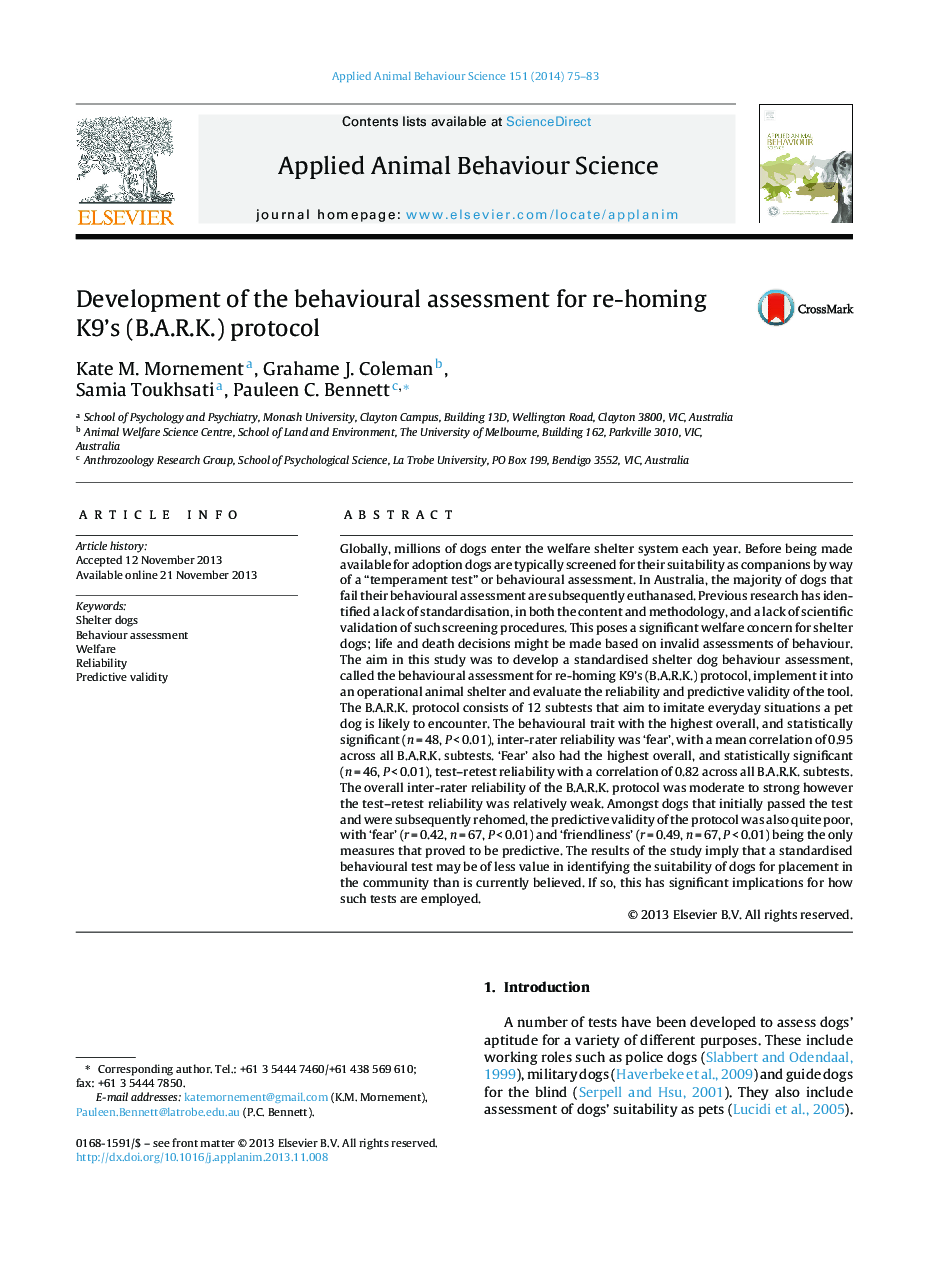| کد مقاله | کد نشریه | سال انتشار | مقاله انگلیسی | نسخه تمام متن |
|---|---|---|---|---|
| 4522621 | 1625355 | 2014 | 9 صفحه PDF | دانلود رایگان |

Globally, millions of dogs enter the welfare shelter system each year. Before being made available for adoption dogs are typically screened for their suitability as companions by way of a “temperament test” or behavioural assessment. In Australia, the majority of dogs that fail their behavioural assessment are subsequently euthanased. Previous research has identified a lack of standardisation, in both the content and methodology, and a lack of scientific validation of such screening procedures. This poses a significant welfare concern for shelter dogs; life and death decisions might be made based on invalid assessments of behaviour. The aim in this study was to develop a standardised shelter dog behaviour assessment, called the behavioural assessment for re-homing K9's (B.A.R.K.) protocol, implement it into an operational animal shelter and evaluate the reliability and predictive validity of the tool. The B.A.R.K. protocol consists of 12 subtests that aim to imitate everyday situations a pet dog is likely to encounter. The behavioural trait with the highest overall, and statistically significant (n = 48, P < 0.01), inter-rater reliability was ‘fear’, with a mean correlation of 0.95 across all B.A.R.K. subtests. ‘Fear’ also had the highest overall, and statistically significant (n = 46, P < 0.01), test–retest reliability with a correlation of 0.82 across all B.A.R.K. subtests. The overall inter-rater reliability of the B.A.R.K. protocol was moderate to strong however the test–retest reliability was relatively weak. Amongst dogs that initially passed the test and were subsequently rehomed, the predictive validity of the protocol was also quite poor, with ‘fear’ (r = 0.42, n = 67, P < 0.01) and ‘friendliness’ (r = 0.49, n = 67, P < 0.01) being the only measures that proved to be predictive. The results of the study imply that a standardised behavioural test may be of less value in identifying the suitability of dogs for placement in the community than is currently believed. If so, this has significant implications for how such tests are employed.
Journal: Applied Animal Behaviour Science - Volume 151, February 2014, Pages 75–83